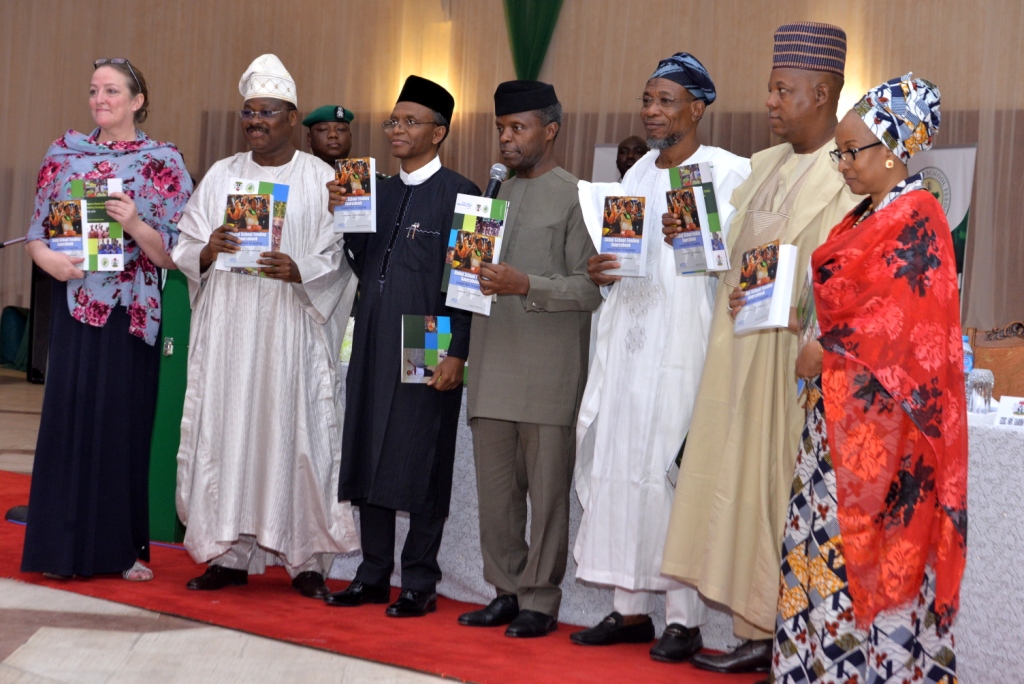Nigerian Vice-President, Prof. Yemi Osinbajo has announced that the Government’s National Home Grown School Feeding programme will start providing free school meals to 4.2 million children in 11 states in October 2016.
The programme, which was
formally inaugurated on June 9, 2016 by Vice-President Osinbajo, is part of a N500bn Social Investment Plan budgeted for in the 2016 Appropriation Act.
National Programme Manager of the
Home Grown School Feeding (HGSF) programme, Mrs. Abimbola Adesanmi confirmed that the Federal Government will being the implementation of the programme to coincide with the start of the new school term,
“I am delighted that an initial eleven states have announced their readiness to commence feeding of pupils in Primary one to three before the end of this month. ”
"We have supported the states to establish structures that would enhance the implementation of the programme. This has included conducting capacity building workshops and trainings for implementers and stakeholders at state level."
Mrs Adesanmi, who has been seconded from
Imperial College London’s Partnership for Child Development, identified the 11 states as Zamfara, Sokoto, Kaduna, Borno, Anambra, Enugu, Ebonyi, Akwa Ibom, Osun, Oyo and Ogun.
The Federal Government will fund the HGSF programme to feed 4.2 million pupils of primary one to three in 2016, each pupil will receive a meal worth N 70 (0.27 USD) for 200 school days.
Vice-President Osinbajo said, “We will be hiring caterers and cooks in each state because it will be Federal Government-funded from primaries 1 to 3 and the state governments hopefully would be able to cater for the other classes.
The programme will energise agriculture in the different states because it is what you plant that you feed the children with. “
A similar programme that has been
successfully running in the State of Osun has created over 3,000 catering jobs and contracted over 5000 farmers to supply school meals to 250,000 primary school children.
Further Resources

